Economy of Lebanon
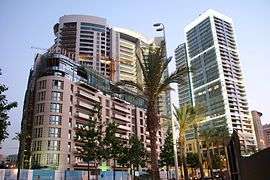 | |
| Currency | Lebanese pound (LBP) |
|---|---|
| Calendar | |
Trade organisations | CAEU |
| Statistics | |
| GDP |
|
GDP growth |
0.8% (2015), 2.0% (2016), 2.0% (2017e), 2.0% (2018f) [2] |
GDP per capita |
$15,000 (nominal) (2015 est.)[3] |
GDP by sector | agriculture 5.7%, industry 21%, services 73.3% (2017 est.)[1] |
|
| |
Labour force | 2.166 million note: in addition, there are as many as 1 million foreign workers (2016 est.)[1] |
| Unemployment | 7.26% (2014 est.) |
Main industries | banking, tourism, winery, food processing, jewelry, cement, textiles, mineral and chemical products, wood and furniture products. |
| 87th (2017)[4] | |
| External | |
| Exports |
|
Export goods | authentic jewelry, inorganic chemicals, miscellaneous consumer goods, fruit, tobacco, construction minerals, electric power machinery and switchgear, textile fibers and paper. |
Main export partners |
|
| Imports |
|
Import goods | petroleum products, cars, medical products, clothing, meat and live animals, consumer goods, paper, textile fabrics and tobacco. |
Main import partners |
|
Gross external debt | $37.08 billion (31 December 2015 est.)[5] |
| Public finances | |
|
US$ 69.02 billion[6][7] (May 2015), 132% of GDP (2015) | |
| Revenues | $12.133 billion (2014 est.) |
| Expenses | $17.456 billion (2012 est.) |
| Economic aid | recipient $5.4 billion (2014 est.) |
|
Standard & Poor's:[8] B (Domestic) B (Foreign) BB- (T&C Assessment) Outlook: Negative[9] Moody's:[9] B1 Outlook: Stable Fitch:[9] B Outlook: Stable | |
Foreign reserves |
|
The economy of Lebanon is a developing economy, with a private sector that contributes to 75% of aggregate demand and a large banking sector that supports this demand. The IMF forecast a growth of 7% for Lebanon's real GDP in 2010 and 2011 following 9% growth in 2009 and 8.5% in 2008. It has the 54th richest GDP per capita in the world, and it was forecasted that Lebanon's GDP per capita would reach $20,000 by 2015, making it one of the strongest economies in the region.[10] However, the Lebanese economy was badly affected by the Syrian civil war. The institute of international finance forecasted GDP growth of only 0.7% for 2013.[11] Lebanon also suffers from a very high degree of public debt, the third-highest in the world in terms of the ratio of debt-to-GDP. As a consequence, interest payments consumed 48% of domestic government revenues in 2016, thus limiting the government’s ability to make needed investments in infrastructure and other public goods.[12]
The major industrial sectors include metal products, banking, agriculture, chemicals, and transport equipment. Lebanon has a competitive and free market regime and a strong laissez-faire commercial tradition. The Lebanese economy is service-oriented; main growth sectors include banking and tourism. There are no restrictions on foreign exchange or capital movement.
History
| Year | Lebanon | MENA avg |
|---|---|---|
| 1980 | 5,322 | 3,346 |
| 1981 | 5,897 | 3,581 |
| 1982 | 3,970 | 3,681 |
| 1983 | 5,064 | 3,781 |
| 1984 | 7,592 | 3,903 |
| 1985 | 9,613 | 3,980 |
| 1986 | 9,025 | 3,873 |
| 1987 | 10,722 | 3,869 |
| 1988 | 7,875 | 3,826 |
| 1989 | 4,674 | 4,001 |
| 1990 | 4,158 | 4,191 |
| 1991 | 5,649 | 4,472 |
| 1992 | 5,925 | 4,570 |
| 1993 | 6,352 | 4,658 |
| 1994 | 6,868 | 4,764 |
| 1995 | 7,320 | 4,860 |
| 1996 | 7,606 | 5,138 |
| 1997 | 7,892 | 5,352 |
| 1998 | 8,031 | 5,512 |
| 1999 | 7,928 | 5,585 |
| 2000 | 8,077 | 5,876 |
| 2001 | 8,478 | 6,063 |
| 2002 | 8,792 | 6,261 |
| 2003 | 9,144 | 6,711 |
| 2004 | 9,959 | 7,175 |
| 2005 | 10,367 | 7,360 |
| 2006 | 10,751 | 7,882 |
| 2007 | 11,893 | 8,354 |
| 2008 | 13,116 | 8,735 |
| 2009 | 14,197 | 10,862 |
| 2010 | 15,168 | 10,920 |
| 2011 | 15,523 | 11,896 |
| 2012 | 15,985 | 13,088 |
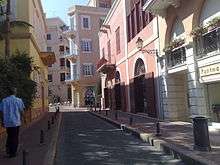
The 1975-90 Lebanese civil war seriously damaged Lebanon's economic infrastructure, cut national output by half,[15] and had major consequences for Lebanon's position as a Middle Eastern entrepot and banking hub.[16] After the war, the central government regained its ability to collect taxes and control over key port and government facilities. As a result, GDP per capita expanded 353% in the 1990s.[17] Economic recovery has been helped by a financially sound banking system and resilient small- and medium-scale manufacturers, with family remittances, banking services, manufactured and farm exports, and international aid as the main sources of foreign exchange.[18] Lebanon's economy has made impressive gains since the launch of "Horizon 2000," the government's $20 billion reconstruction program in 1993. Real GDP grew 8% in 1994 and 7% in 1995 before Israel's Operation Grapes of Wrath in April 1996 stunted economic activity. Real GDP grew at an average annual rate of less than 3% per year for 1997 and 1998 and only 1% in 1999. During 1992-98, annual inflation fell from more than 100% to 5%, and foreign exchange reserves jumped to more than $6 billion from $1.4 billion. Burgeoning capital inflows have generated foreign payments surpluses, and the Lebanese pound has remained relatively stable. Progress also has been made in rebuilding Lebanon's war-torn physical and financial infrastructure. Solidere, a $2-billion firm, is managing the reconstruction of Beirut's central business district; the stock market reopened in January 1996, and international banks and insurance companies are returning. The government nonetheless faces serious challenges in the economic arena. It has had to fund reconstruction by tapping foreign exchange reserves and boosting borrowing. Reducing the government budget deficit is a major goal of the current government. The gap between rich and poor grew in the 1990s, resulting in popular dissatisfaction over the skewed distribution of the reconstruction's benefits and leading the government to shift its focus from rebuilding infrastructure to improving living conditions.
After the end of the civil war, Lebanon enjoyed considerable stability, Beirut's reconstruction was almost complete,[19] and increasing numbers of tourists poured into the nation's resorts.[20] The economy witnessed growth, with bank assets reaching over 75 billion US dollars,[21] Market capitalization was also at an all-time high, estimated at $10.9 billion at the end of the second quarter of 2006.[21] The month-long 2006 war severely damaged Lebanon's economy, especially the tourism sector.[22] Over the course of 2008 Lebanon rebuilt its infrastructure mainly in the real estate and tourism sectors, resulting in a comparatively robust post war economy. Major contributors to the reconstruction of Lebanon include Saudi Arabia (with US$1.5 billion pledged),[23] the European Union (with about $1 billion)[24] and a few other Persian Gulf countries with contributions of up to $800 million.[25]
Given the frequent security turmoil it has faced, the Lebanese banking system has adopted a conservative approach, with strict regulations imposed by the central bank to protect the economy from political instability. These regulations have generally left Lebanese banks unscathed by the Financial crisis of 2007–2010. Lebanese banks remain, under the current circumstances, high on liquidity and reputed for their security.[26] In late 2008, Moody's shifted Lebanon's sovereign rankings from stable to positive, acknowledging its financial security.[27] Moreover, with an increase of 51% in the Beirut stock market, the index provider MSCI ranked Lebanon the world's best performer in 2008.[28] Lebanon is one of the only seven countries in the world in which the value of the stock market increased in 2008.[28] The Lebanese economy experienced continued resilience, growing 8.5 percent in 2008, 7 percent in 2009 and 8.8% in 2010. However, Lebanon's debt to GDP ratio remained one of the highest in the world.[29]
The International Monetary Fund issued a second report on Lebanon in October 2015, where its expectations of the economic growth rate were lowered to 2%, compared to the 2.5% growth rate of the first report, released in April 2015.[30]
External trade
Lebanon has a competitive and free market regime and a strong laissez-faire commercial tradition. The Lebanese economy is service-oriented; main growth sectors include banking and tourism. There are no restrictions on foreign exchange or capital movement, and bank secrecy is strictly enforced. Lebanon has recently adopted a law to combat money laundering. There are practically no restrictions on foreign investment. There are no country-specific U.S. trade sanctions against Lebanon.
Remittances
Lebanon benefits from its large, cohesive, and entrepreneurial diaspora.[31] Over the course of time, emigration has yielded Lebanese "commercial networks" throughout the world.[32] As a result, remittances from Lebanese abroad to family members within the country total $8.2 billion[33] and account for one fifth of the country's economy.[34] Nassib Ghobril, the head of research and analysis for Byblos Bank, calculates that Lebanese abroad supply Lebanon with about $1,400 per capita every year.[35]
Investment
The stock market capitalisation of listed companies in Lebanon was valued at $10.858 billion in 2007 by the World Bank.[36]
Lebanon was unable to attract significant foreign aid to help it rebuild from both the long civil war (1975–89) and the Israeli occupation of the south (1978–2000). In addition, the delicate social balance and the near- dissolution of central government institutions during the civil war handicapped the state as it sought to capture revenues to fund the recovery effort. Thus it accumulated significant debt, which by 2001 had reached $28 billion, or nearly 150% of GDP. Unfortunately, economic performance was sluggish in 2000 and 2001 (zero growth in 2000, and estimates between 1.0-1.4% in 2001, largely attributed to slight increases in tourism, banking, industry, and construction). Unemployment is estimated at 14% for 2000 and 29% among the 15-24 year age group, with preliminary estimates of further increases in 2001. However, fortunately, many Lebanese expatriates have been able to return to the country due to the negative financial situations they are facing abroad, due to the global economic crisis. Also, more job opportunities are attracting more Lebanese youths for a chance to return and work in Lebanon, and also a benefit for the Lebanese living in the country, graduating from universities.
Reforms
| Economy of Lebanon |
|---|
 |
| Overview |
| Other topics |
Lebanon's current program of reforms focuses on three main pillars:
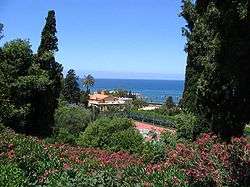
- Economic revival and sustainable growth, with the private sector as the engine of growth;
- Fiscal consolidation and structural improvement in public sector finances; and
- Monetary, financial, and price stability.
The government also has maintained a firm commitment to the Lebanese pound, which has been pegged to the dollar since September 1999. In late 2000, the government substantially reduced customs duties, adopted export promotion schemes for agriculture, decreased social security fees and restrictions on investment in real estate by foreigners, and adopted an open-skies policy, with positive effects on trade in 1991. Nonetheless, the relative appreciation of the Lebanese currency has undermined competitiveness, with merchandise exports falling from 23% of GDP in 1989 to 4% in 2000.
In 2001, the government turned its focus to fiscal measures, Increasing gasoline taxes, reducing expenditures, and approving a value-added-tax that became effective in February 2002. Slow money growth and dollarization of deposits have hampered the ability of commercial banks to finance the government, leaving more of the burden to the central bank. This monetization of the fiscal deficit has put enormous pressure on central bank reserves, mitigated only slightly with the issuance of new Eurobonds over the past 2 years. The central bank has maintained a stable currency by intervening directly in the market, as well as low inflation, and succeeded in maintaining investors' confidence in debt. It has done so at a cost, however, as international reserves declined by $2.4 billion in 2000 and by $1.6 billion in the first half of 2001.
For 2002, the government has put primary emphasis on privatization, initially in the telecom sector and electricity, with continued planning for sales of the state airline, Beirut port, and water utilities. The government has pledged to apply the proceeds of sales to reducing the public debt and the budget deficit. In addition, it projects that privatization will bring new savings as government payrolls are pared, interest rates decline, and private sector growth and foreign investment are stimulated. The government also is tackling the daunting task of administrative reform, aiming to bring in qualified technocrats to address ambitious economic programs, and reviewing further savings that can be realized through reforms of the income tax system. The Lebanese Government faces major challenges in order to meet the requirements of a fiscal adjustment program focusing on tax reforms and modernization, expenditure rationalization, privatization, and improved debt management.
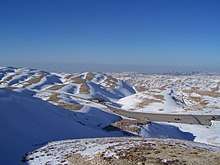
The U.S. enjoys a strong exporter position with Lebanon, generally ranking as Lebanon's fourth-largest source of imported goods. More than 160 offices representing U.S. businesses currently operate in Lebanon. Since the lifting of the passport restriction in 1997 (see below), a number of large U.S. companies have opened branches or regional offices, including Microsoft, American Airlines, Coca-Cola, FedEx, UPS, General Electric, Parsons Brinckerhoff, Cisco Systems, Eli Lilly, Computer Associates and Pepsi Cola. Mexico has also many enterprises run by ethnic Lebanese, such as Carlos Slim's Telmex.
Solidere shares are the most actively traded in the Beirut Stock Exchange. Its share price in the Beirut Stock Exchange has risen sharply in the last year from around US$5.00 in early 2004 to close at US$17.50 on Friday, 23 December 2005.
Salaries of Lebanon
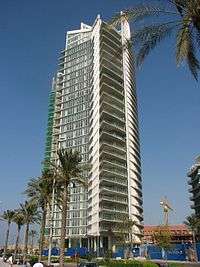
On 15 October 2011, after various unions, including the teachers union, the general workers union, and others threatened to strike, the minimum wage was raised by 40% (200,000 LBP - $133) to 700,000 LBP ($466). Most unions went ahead with the strike except the general workers union.
- Wages between minimal wage and 1,200,000 LBP ($800) were increased by 200,000 ($133) to become 700,000 LBP (minimal wage) and 1,400,000 LBP ($933) respectively.
- Wages more than 1,200,000 LBP up to 1,700,000 LBP ($1133) were increased by 300,000L.P ($200) to become 1,500,000 LBP ($1000) and 2,000,000 LBP ($1333).
- Wages above 1,800,000 LBP ($1200) were not increased.
The increase in wages was welcomed by most Lebanese but it also sparked criticism by many some workers unions, saying that the increases were not up to expectations especially that employees earning more that $1200 were not entitled to raises. Others criticized the raises altogether citing that it would burden small business that might end up closing altogether, those critics were mainly opposition politicians.
As of 2013 World Bank analysis of Quality Life Index, it was estimated that:
- 15% of the Lebanese people lives below poverty line ($2,500)[37]
- 54% of the Lebanese people lives in the moderate middle class ($9,000) annually.

- 32% of the Lebanese people lives in the upper middle class ($15,000 - $27,000) annually.

- 7% of the Lebanese people lives in the highest upper class rich ($30,000 and above) annually

Macro-economic trend
This is a chart of trend of gross domestic product of Lebanon at market prices estimated by the International Monetary Fund with figures in millions of Lebanese pounds.[38]
| Year | Gross Domestic Product | US Dollar Exchange | Inflation Index (2000=100) |
|---|---|---|---|
| 1980 | 14,000 | 3.43 Lebanese Pounds | 0.071 |
| 1985 | 59,329 | 16.41 Lebanese Pounds | 0.21 |
| 1990 | 1,973,000 | 695.20 Lebanese Pounds | 18 |
| 1995 | 18,027,607,000 | 1,621.33 Lebanese Pounds | 81 |
| 2000 | 25,143,000,000 | 1,507.46 Lebanese Pounds | 100 |
| 2005 | 33,243,000,000 | 1,507.48 Lebanese Pounds | 105 |
| 2007 | 37,243,000,000 | 1,507.48 Lebanese Pounds | 103 |
| 2009 | 41,243,000,000 | 1,507.48 Lebanese Pounds | 101 |
| 2011 | 63,243,000,000 | 1,507.48 Lebanese Pounds | 99 |
The following table shows the main economic indicators in 1980–2017.[39]
| Year | 1980 | 1985 | 1990 | 1995 | 2000 | 2005 | 2006 | 2007 | 2008 | 2009 | 2010 | 2011 | 2012 | 2013 | 2014 | 2015 | 2016 | 2017 |
|---|---|---|---|---|---|---|---|---|---|---|---|---|---|---|---|---|---|---|
| GDP in $ (PPP) |
15.33 Bln. | 27.70 Bln. | 12.64 Bln. | 25.34 Bln. | 32.90 Bln. | 43.43 Bln. | 46.11 Bln. | 51.75 Bln. | 57.65 Bln. | 63.93 Bln. | 69.91 Bln. | 72.01 Bln. | 75.39 Bln. | 78.63 Bln. | 81.64 Bln. | 83.20 Bln. | 85.11 Bln. | 87.78 Bln. |
| GDP per capita in $ (PPP) |
6,013 | 10,863 | 4,674 | 8,352 | 10,169 | 11,032 | 11,301 | 12,501 | 13,772 | 15,053 | 16,104 | 16,430 | 17,038 | 17,769 | 18,450 | 18,803 | 19,050 | 19,439 |
| GDP growth (real) |
1.5 % | 24.3 % | −13.4 % | 6.5 % | 1.1 % | 2.7 % | 1.7 % | 9.3 % | 9.2 % | 10.1 % | 8.0 % | 0.9 % | 2.8 % | 2.6 % | 2.0 % | 0.8 % | 1.0 % | 1.2 % |
| Inflation (in Percent) |
23.9 % | 69.4 % | 68.9 % | 10.3 % | −0.4 % | −0.7 % | 5.6 % | 4.1 % | 10.8 % | 1.2 % | 9.6 % | 4.5 % | 6.6 % | 4.8 % | 1.9 % | −3.7 % | −0.8 % | 4.5 % |
| Government debt (Percentage of GDP) |
... | ... | ... | ... | 146 % | 179 % | 183 % | 169 % | 161 % | 144 % | 137 % | 134 % | 131 % | 138 % | 139 % | 142 % | 151 % | 153 % |
See also
References
- 1 2 3 4 5 6 7 8 9 10 "The World Factbook- Lebanon". Central Intelligence Agency. Retrieved 6 May 2018.
- ↑ "World Bank forecast for Lebanon, June 2018 (p. 152)" (PDF). World Bank. Retrieved 11 September 2018.
- ↑ Lebanon https://www.forbes.com/places/lebanon/. Missing or empty
|title=(help) - ↑ "Ease of Doing Business in Lebanon". Doingbusiness.org. Retrieved 2017-01-23.
- ↑ "2012 External Debt of Lebanon". CIA World Factbook. 2015. Retrieved 31 October 2016.
- ↑ http://www.finance.gov.lb/en-US/finance/PublicDebt/Documents/Quarterly%20Debt%20Report/2015/Debt%20and%20Debt%20Markets%20QII%202015.pdf
- ↑ Ministry of Finance: Debt Reports: http://www.finance.gov.lb/en-US/finance/PublicDebt/Pages/DebtReports.aspx
- ↑ "Sovereigns rating list". Standard & Poor's. Retrieved 26 May 2011.
- 1 2 3 Rogers, Simon; Sedghi, Ami (15 April 2011). "How Fitch, Moody's and S&P rate each country's credit rating". The Guardian. Retrieved 31 May 2011.
- ↑ "Middle East economic growth to rebound to 3.7% in 2010, says World Bank". bi-me.com. 21 January 2010. Retrieved 20 April 2015.
- ↑ "IIF revises 2013 GDP growth forecast down to 0.7 percent". The Daily Star. 29 October 2013. Retrieved 20 April 2015.
- ↑ Barrington, Lisa (30 August 2017). "Lebanon embarks on long-delayed reforms but debt problems mount". Reuters. Retrieved 14 October 2017.
- ↑ "Middle East and North Africa, Gross domestic product (PPP) per capita GDP, 1980–2012". Imf.org. 14 September 2006. Retrieved 17 January 2013.
- ↑ "Lebanon, Gross domestic product (PPP) per capita GDP, 1980–2012". Imf.org. 14 September 2006. Retrieved 17 January 2013.
- ↑ Stinson, Jefferey (1 August 2006). "Lebanese forces may play bigger role in war". USA TODAY. Retrieved 22 August 2009.
- ↑ "Lebanon". The World Factbook. Central Intelligence Agency.
- ↑ "Economics, Business, and the Environment — GDP: GDP per capita, current US dollars". EarthTrends. Archived from the original on 31 January 2008. Retrieved 31 December 2008.
- ↑ "CIA World Factbook 2001" (PDF). Archived from the original (PDF) on 4 June 2007. Retrieved 17 January 2013.
- ↑ "Deconstructing Beirut's Reconstruction: 1990–2000". Center for the Study of the Built Environment. Archived from the original on 20 January 2002. Retrieved 31 October 2006.
- ↑ Anna Johnson (2006). "Lebanon: Tourism Depends on Stability". Retrieved 31 October 2006.
- 1 2 "Lebanon Economic Report: 2nd quarter, 2006" (PDF). Bank Audi. Archived from the original (PDF) on 23 November 2008. Retrieved 17 January 2013.
- ↑ "Impact of the July Offensive on the Public Finances in 2006" (PDF). Lebanese Ministry of Finance. Retrieved 17 January 2013.
- ↑ Joseph S. Mayton (28 September 2007). "Saudi Arabia Key Contributor To Lebanon's Reconstruction". Cyprus News. Archived from the original on 28 September 2007. Retrieved 17 January 2013.
- ↑ "Donors pledge more than $940 million for Lebanon". Reliefweb.int. 31 August 2006. Retrieved 17 January 2013.
- ↑ "The Custodian of the Two Holy Mosques Reviews with the Jordanian King the Situation in Lebanon..." Ain-Al-Yaqeen. Archived from the original on 20 October 2006. Retrieved 17 January 2013.
- ↑ "Lebanon 'immune' to financial crisis". BBC News. 5 December 2008. Retrieved 28 January 2010.
- ↑ "Moody's changes outlook for Lebanon's sovereign ratings to positive from stable". Moody's. 11 December 2008.
- 1 2 Cooper, Kathryn (5 October 2008). "Where on earth can you make a decent return?". London: The Sunday Times. Archived from the original on 25 May 2010. Retrieved 28 January 2010.
- ↑ "The World Factbook - Public debt percentages of GDP". Cia.gov. 2014. Retrieved 20 April 2015.
- ↑ "Influx of Syrian Refugees Continues to Impact Lebanese Economy". Fanack.com. Retrieved 25 July 2016.
- ↑ Global Investment House.Lebanon Economic and Strategic Outlook (Nov 2008) Retrieved 28 June 2009.
- ↑ Background Note: Lebanon "www.washingtoninstitute.org". Retrieved 3 December 2006.
- ↑ International Organization for Migration."Lebanon - Facts and Figures" Retrieved 13 June 2009.
- ↑ Reuters."FACTBOX: Facts on Lebanon's economy" Retrieved 13 June 2009.
- ↑ Robert F. Worth (24 December 2007). "Home on Holiday, the Lebanese Say, What Turmoil?". The New York Times. Retrieved 20 April 2015.
- ↑ "World Development Indicators - Lebanon". The World Bank. Archived from the original on 5 December 2006. Retrieved 31 December 2008.
- ↑ "Economy > Population below poverty line: Countries Compared". Nationmaster.com. Retrieved 20 April 2015.
- ↑ "Lebanon Monetary Report". International Monetary Fund. Retrieved 31 December 2008.
- ↑ "Report for Selected Countries and Subjects". Retrieved 2018-08-30.
External links
- BSE trade sky high despite tensions - The Daily Star
- Embassy of Lebanon, Washington D.C. - Country Profile, The Economy
- Lebanese Economy extracted from the CIA factbook public data
- Lebanon Economic Development at Curlie (based on DMOZ)
- Tariffs applied by Lebanon as provided by ITC's Market Access Map, an online database of customs tariffs and market requirements.